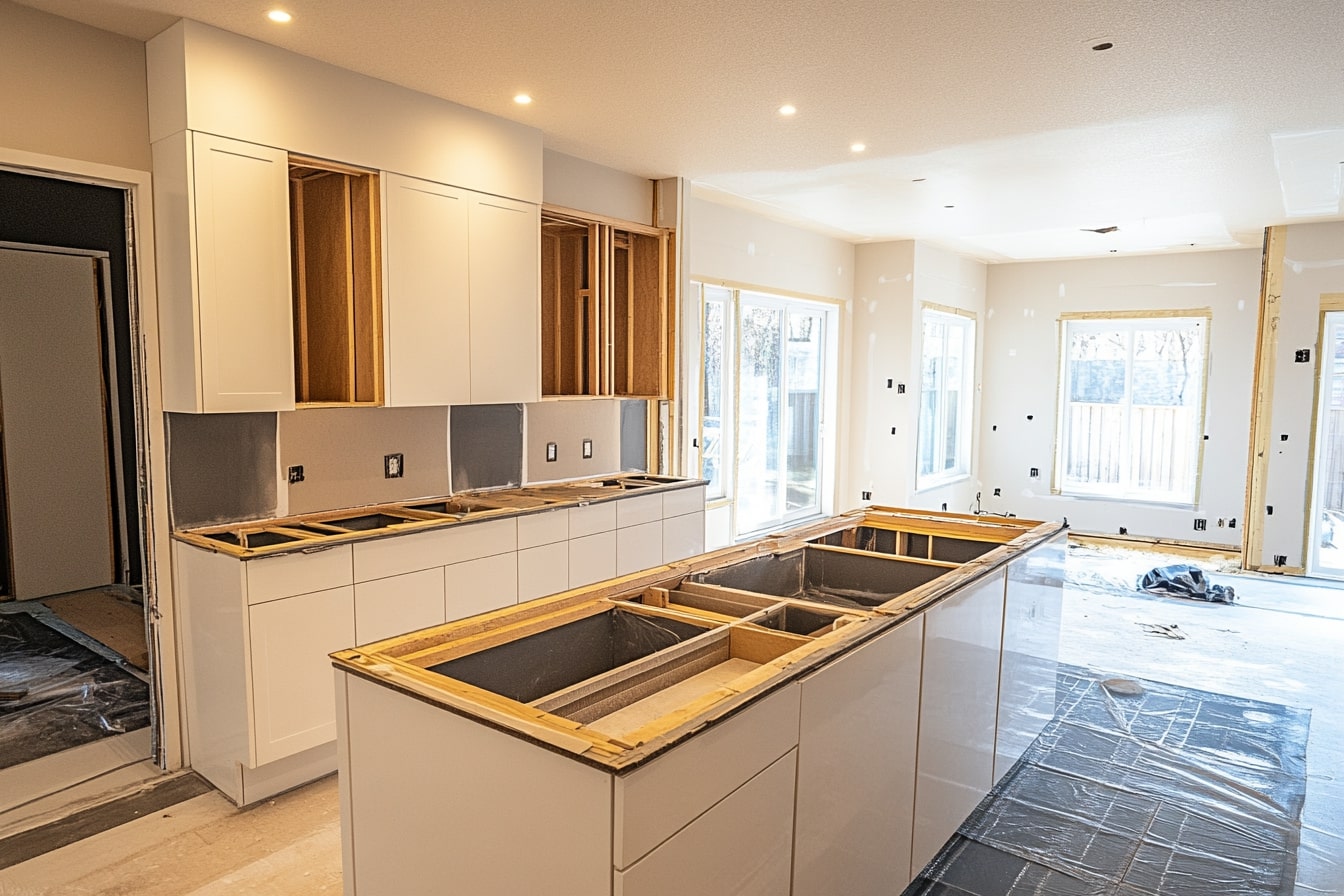Modern Kitchen Remodel: Your Complete Renovation Guide
Transform your kitchen into a stylish, efficient hub that boosts both daily comfort and home value. This guide walks you through choosing contemporary cabinets, adding smart appliances, designing effective work zones, and budgeting wisely. Learn practical tips, cost expectations, and ROI strategies to plan a modern kitchen renovation that looks great and works even better.

A kitchen remodel can be far more than cosmetic—it’s an opportunity to improve workflow, increase storage, and raise your home’s resale appeal. Modern renovations blend clean aesthetics with practical solutions, delivering a space that suits everyday life and stands the test of time. Below are the essential considerations and actionable advice to plan a contemporary, functional kitchen.
Choosing Contemporary Cabinets
Cabinets set the tone for both how a kitchen looks and how it functions. Current favorites include flat-panel doors, handleless designs with push-to-open hardware, and two-tone schemes that mix upper and lower finishes for visual interest. When evaluating cabinet options, prioritize:
- Thoughtful storage: pull-out pantries, vertical dividers for baking sheets, and corner pull-outs or lazy Susans to avoid wasted space.
- Quiet operation: soft-close hinges and drawer slides add refinement and reduce wear.
- Durable construction: choose solid wood, plywood boxes, or high-quality MDF with moisture-resistant finishes for longevity.
- Custom organization: built-in cutlery trays, spice racks, and appliance garages tailored to how you cook.
- Seamless integration: plan cabinet depth, clearances, and cutouts to accommodate modern appliances and workflow needs.
Custom cabinetry offers the best fit and organization but comes at a premium. Semi-custom or thoughtfully selected stock options can deliver excellent results on a tighter budget.
Bringing Smart Appliances into the Kitchen
Smart appliances enhance convenience and often improve energy efficiency. Popular innovations include refrigerators with internal cameras and touchscreen interfaces, ovens you can preheat from an app, and dishwashers that report cycle status to your phone. Other smart upgrades to consider:
- Voice-activated faucets and connected lighting for hands-free control.
- Appliances with energy-saving modes to reduce utility bills and environmental impact.
- Integrated appliance ecosystems that communicate for coordinated performance (for example, a range hood that syncs with a smart cooktop).
When choosing smart devices, check compatibility with your preferred platform (Alexa, Google Home, Apple HomeKit) and consider long-term support, warranty, and security updates.
Planning Functional Work Zones
A well-designed kitchen organizes tasks into clear zones so multiple activities can happen without conflict. Key zones to define:
- Prep zone: generous counter space near the main sink and fridge for washing and chopping.
- Cooking zone: the stove or cooktop plus adjacent counter space and a well-ventilated hood.
- Cleanup zone: sink and dishwasher positioned for smooth loading and drainage.
- Storage zone: dry goods, small appliances, and cookware stored near their point of use.
- Social/entertainment zone: an island or peninsula seating area that keeps guests engaged without interrupting food prep.
Plan traffic flow and clearances—allow enough room for appliance doors, drawer swings, and multiple users. Lighting is also critical: combine task lighting (under-cabinet strips), ambient illumination, and accent fixtures to support each zone.
Budgeting and Typical Costs
Remodel costs depend heavily on material choices, scope, and labor rates. Below is a general cost breakdown to help set realistic expectations:
| Component | Basic Range | Mid-Range | Luxury Range |
|---|---|---|---|
| Cabinets | $4,500 - $11,000 | $11,000 - $24,000 | $24,000+ |
| Appliances | $7,500 - $14,000 | $14,000 - $28,000 | $28,000+ |
| Countertops | $1,800 - $3,800 | $3,800 - $7,500 | $7,500+ |
| Installation (labor) | $2,800 - $6,000 | $6,000 - $11,500 | $11,500+ |
Prices, rates, or cost estimates mentioned in this article are based on the latest available information but may change over time. Independent research is advised before making financial decisions.
Plan for contingencies—set aside 10% to 20% of your budget for unexpected issues discovered during demolition or installation. Getting multiple contractor bids and checking references can help control costs and avoid surprises.
Boosting Return on Investment
A thoughtfully executed remodel usually returns a large portion of its cost at resale, particularly when upgrades are tasteful and functional. To maximize ROI:
- Favor classic, neutral finishes that appeal broadly to buyers.
- Invest in durable surfaces and well-built cabinets that will continue to look and perform well over time.
- Choose energy-efficient appliances and sustainable materials where possible—these features increasingly influence buyer decisions.
- Keep the layout sensible; major footprint changes (moving plumbing or walls) are expensive and don’t always provide proportional returns.
Generally, mid-range upgrades that improve usability and aesthetics without being overly customized will attract the widest buyer pool.
Final Considerations and Next Steps
Successful kitchen renovations balance design, function, and budget. Start by clarifying how you use the space—who cooks, entertains, stores groceries—and make decisions to support those habits. Create a prioritized wish list to separate must-haves from nice-to-haves, then consult with designers or contractors to refine plans and timelines.
Good planning reduces stress: lock in key selections (cabinets, countertops, major appliances) early to avoid delays. Keep communication open with your contractor and document agreements in writing. With careful choices and thoughtful design, you can create a modern kitchen that enhances daily life and adds lasting value to your home.






